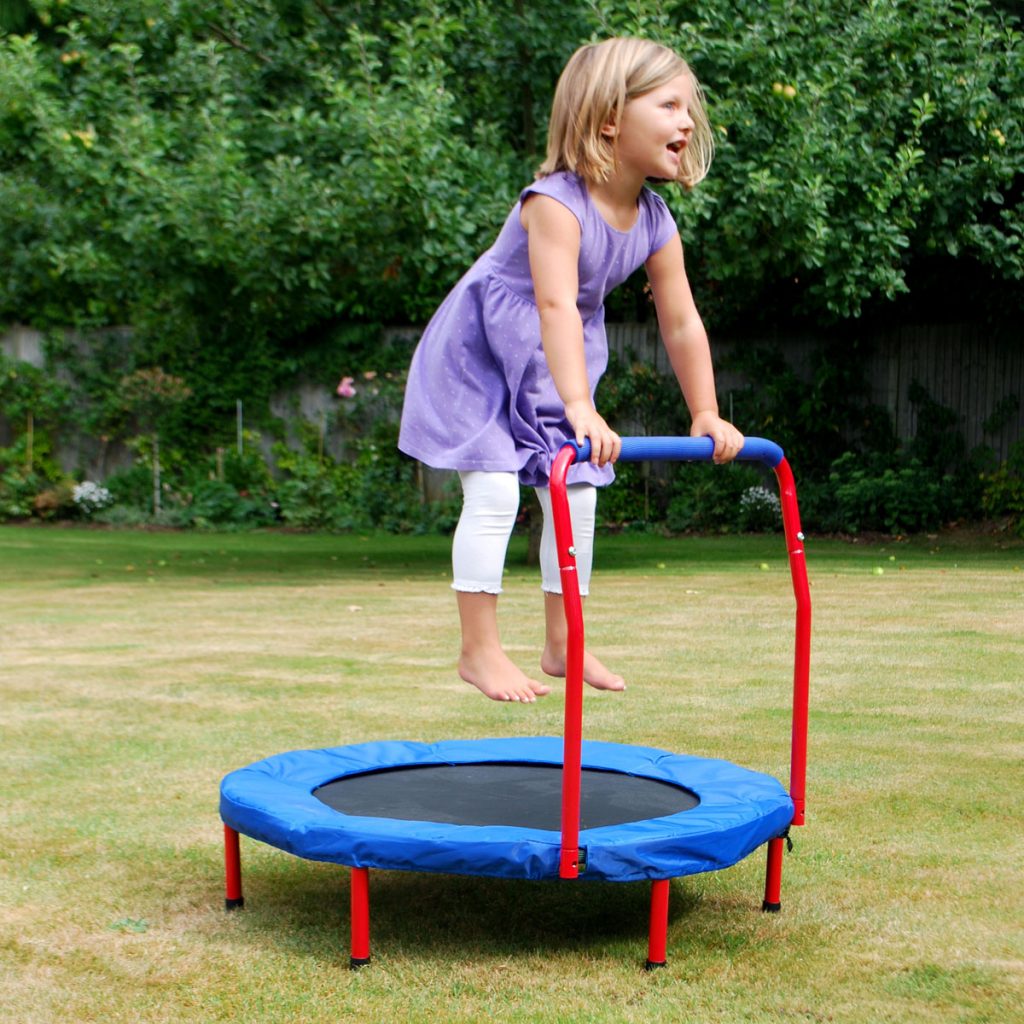Mini Trampolines and Sensory Play: Enhancing Development in Young Children
In the world of childhood development, sensory play plays a crucial role in nurturing various aspects of a child’s growth. Mini trampolines, with their gentle bouncing motion, have emerged as an engaging tool for sensory play that goes beyond mere entertainment. In this article, we will explore the significant impact of mini trampolines on sensory development in young children, highlighting how bouncing can enhance sensory integration, body awareness, and overall developmental milestones.
- Stimulating the Vestibular System:
The vestibular system, responsible for balance and spatial orientation, is closely linked to sensory development. Mini trampolines provide an ideal environment for stimulating the vestibular system. The rhythmic bouncing motion introduces controlled changes in the child’s head position, activating the vestibular receptors. This stimulation contributes to the development and refinement of the vestibular system, laying the foundation for improved balance and coordination.
- Enhancing Body Awareness:
Sensory play on mini trampolines fosters heightened body awareness in young children. As they engage in bouncing activities, children become more attuned to the movements of their bodies. The sensations of jumping, landing, and maintaining balance promote a sense of self-awareness, helping children understand the capabilities and boundaries of their bodies. This enhanced body awareness is a fundamental aspect of sensory development.
- Developing Proprioception:
Proprioception, or the awareness of one’s body in space, is another critical component of sensory development. Mini trampolines (https://leotoystore.com/collections/mini-trampoline-for-kids) provide proprioceptive input through the physical sensations experienced during bouncing. The push-and-pull forces on the muscles and joints contribute to a child’s understanding of their body’s position and movements. Developing proprioception is essential for activities that require coordination and spatial navigation.
- Calming and Alerting Effects:
Sensory play on mini trampolines offers both calming and alerting effects on a child’s nervous system. The rhythmic and repetitive bouncing motion has a calming influence, helping children regulate their sensory responses. This can be particularly beneficial for children who may experience sensory sensitivities or seek sensory input for self-regulation. On the other hand, the alerting effects of bouncing can provide a gentle wake-up call for children who need a sensory boost.
- Sensory Integration for Learning Readiness:
Sensory integration refers to the brain’s ability to organize and interpret sensory information from the environment. Engaging in sensory play on mini trampolines contributes to sensory integration, creating a foundation for learning readiness. As children experience varied sensory input through bouncing, their brains learn to process and integrate this information effectively. This, in turn, enhances their ability to focus, concentrate, and participate in learning activities.

- Promoting Gross Motor Skills:
Bouncing on mini trampolines is an excellent way to promote the development of gross motor skills in young children. The coordinated movements involved in jumping and landing engage large muscle groups, contributing to the development of strength, coordination, and balance. These gross motor skills form the basis for more complex physical activities and play a crucial role in overall motor development.
- Encouraging Sensory Exploration:
Mini trampolines create a dynamic and inviting space for sensory exploration. Unlike traditional sensory activities, trampolining introduces an element of fun and excitement into the sensory play experience. Children can experiment with different bouncing styles, explore the sensations of jumping at varying heights, and engage in imaginative play while on the trampoline. This encourages a positive attitude towards sensory exploration and contributes to the child’s overall sensory development.
- Inclusive Sensory Play:
Mini trampolines offer an inclusive platform for sensory play, accommodating children with diverse sensory profiles. Whether a child seeks sensory input or needs a more gentle approach, trampolining can be adapted to individual preferences. The inclusive nature of sensory play on mini trampolines fosters a sense of belonging and participation, promoting positive sensory experiences for children of different abilities.
- Supporting Children with Sensory Processing Challenges:
For children with sensory processing challenges, mini trampolines can be valuable tools for therapeutic sensory play. The controlled sensory input provided by bouncing can help modulate sensory responses and contribute to sensory integration. Occupational therapists often incorporate mini trampolines into sensory interventions for children with challenges such as sensory processing disorder, autism spectrum disorder, or attention-deficit/hyperactivity disorder.
- Creating Joyful Sensory Memories:
Beyond the developmental benefits, sensory play on mini trampolines creates joyful sensory memories for children. The positive associations formed during trampolining contribute to a child’s overall attitude towards sensory experiences. These joyful memories can extend beyond childhood, influencing how children approach new sensory challenges and activities as they grow.
Mini trampolines, with their gentle bouncing motion, serve as powerful tools for enhancing sensory development in young children. From stimulating the vestibular system and enhancing body awareness to promoting sensory integration and supporting children with sensory processing challenges, trampolining goes beyond entertainment to become a holistic sensory play experience. As parents, caregivers, and educators introduce mini trampolines into the lives of young children, they are not just providing a source of fun but creating a rich sensory environment that contributes to the child’s overall development and well-being.
